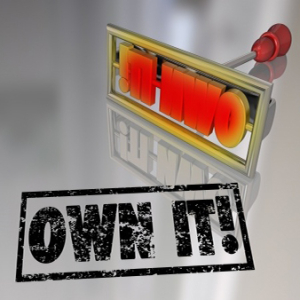By Dr. Ken Broda Bahm:
I have this theory, and because it is mine, I believe it. That, in a nutshell, is the explanation of a new and unique bias that has recently been demonstrated by social science researchers. The bias is called, “Spontaneous Preference for Own Theories,” or SPOT for short, and the explanation is pretty much contained in the name: If we take a theory to be our own, then we will tend to prefer it automatically. That bias has some close cousins in the cognitive world: The “Endowment Effect” is the tendency to value what it ours, “Confirmation Bias” is the tendency to trust what is consistent with what we already think, and the “Lake Woebegone Effect” is the tendency for most of us to consider ourselves to be above average. While SPOT is close to these, it is also statistically distinct. The research, summarized in a recent piece in Research Digest, shows that even when the connection to our actual thoughts and the theory is somewhat artificial, we will still value it more if it is characterized as “our own.”
The research (Gregg, Mahadevan & Sedikides, 2016) involved participants being asked to evaluate evidence about two imaginary alien races preying on each other. The task was to identify which was predator and which was prey. Asked to imagine that a given theory was either their own, or belonging to “Alex,” another research participant, participants were then asked to evaluate evidence and decide whether it supports or opposes the theory. When the theory was nominally considered “theirs,” participants were significantly more likely to see the theory as true. Thing is, they knew it wasn’t really their theory. They were just told to act as though it was. But even that implied ownership worked. And that underscores a fundamental principle of persuasion. People trust what is theirs, or what seems to be theirs. So if they arrive at their own conclusion, or if it is just made to seem that they are arriving at their own conclusion, then that conclusion is going to be quite a bit stickier. In this post, I’ll share some practical ways that persuaders can make their target audience feel like they own their conclusions.
I have written before that the targets of any persuasion need to actively participate in that process, and that all persuasion is ultimately self-persuasion. That suggests that the best persuasive methods should treat the audience as an active partner and not as a passive vessel. Here are a few rules of thumb for fitting that active ownership concept into your message.
Empower
The law might state it in pretty passive terms. The jury’s role is to listen, evaluate, and decide. In court earlier this week, the judge sternly told the jurors, “Your job is not to investigate, it is just to receive what we tell you.” Of course, the judge was just trying to discourage social media research, and on that point, she was right. But in the broader sense, the jury is absolutely supposed to investigate: Limited to what they hear in court, of course, but still actively evaluating what they hear as they search for answers. That temporary identity for jurors is an important one, and the more you draw attention to it, the more you empower jurors to frame their role actively and not passively.
Teach the Path, Not Just the Destination
Your audience, juror or judge, doesn’t just want to know what you’re selling, they want to know how they would get it on their own. The advice to “show your work” certainly applies to expert witnesses, but applies to advocates as well. Instead of the message being, “Here is what I want you to think, and here are all the reasons you should think so…” the message needs to be, “Here is the problem you’re tasked with, and here is a reasonable and feasible path you can take in getting to an answer…” Of course, you aren’t neutral about the destination: You want them to get to your side of the argument. But in the process, it is better to act as though they’re following your breadcrumbs while walking the path on their own, instead of just getting in the car while you drive.
Remind Jurors that They are Free
Some interesting research indicates that simply reminding decision makers of their freedom to decide serves to increase your influence. Called the “But you are free” effect, the idea is that this emphasis on free choice makes the subject feel more powerful and in control, and that can help to make them more comfortable with what you are advising. One particularly robust study (Carpenter, 2013) showed that just adding the, “but you are free” message to the end of a persuasive appeal effectively doubled its chances of working. So, show the path and empower jurors to follow it, while still recognizing the fundamental truth that they’re free to agree or not.
______
Other Posts on Self-Persuasion:
- See Persuasion as a Process (Toward a Unified Theory of Legal Persuasion)
- Don’t Persuade
- Empower Through Choices
______
Gregg, A. P., Mahadevan, N., & Sedikides, C. (2016). The SPOT effect: People spontaneously prefer their own theories. The Quarterly Journal of Experimental Psychology, 1-15.
Image credit: 123rf.com, used under license
